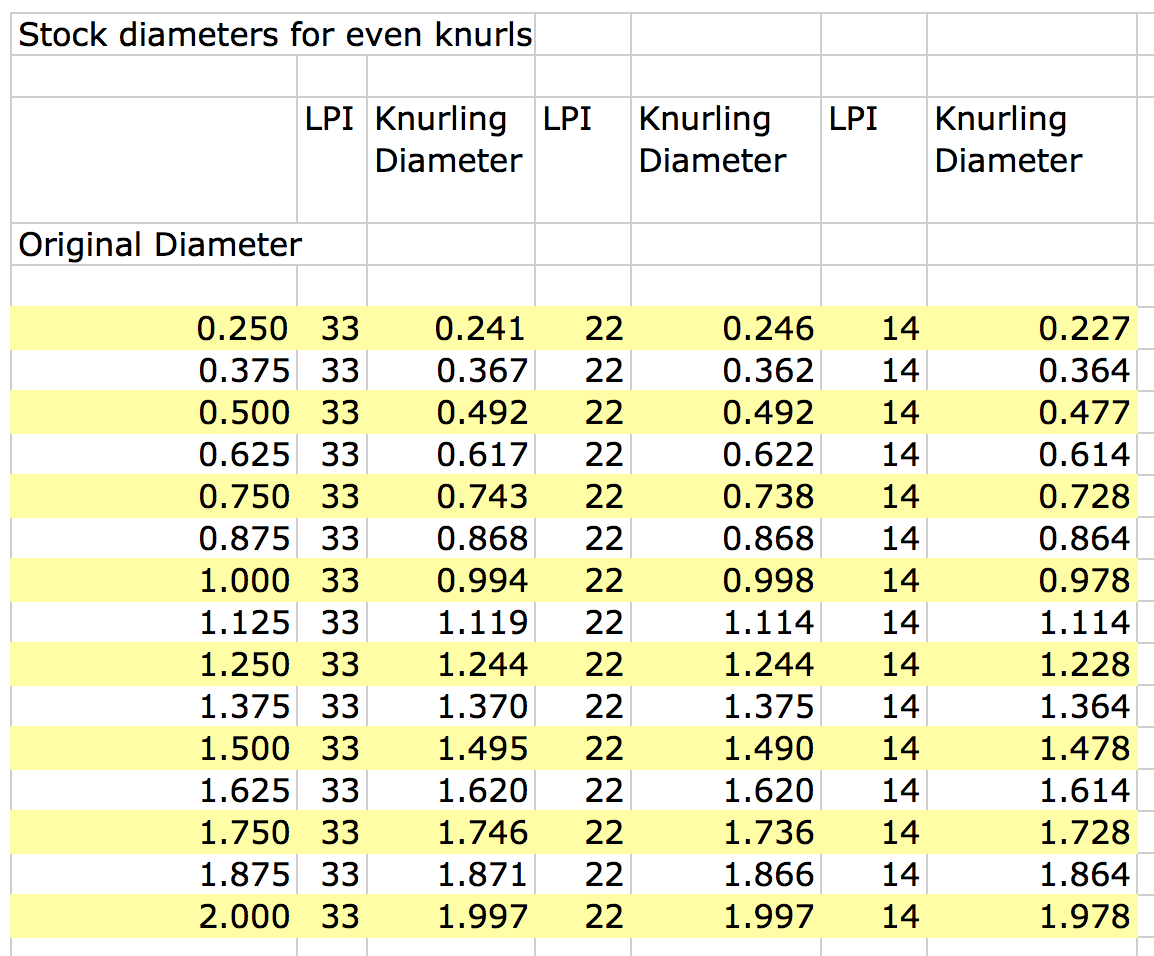Wait a second Mike, Will is just trying to get you to buy a knurler. You were trying to get me to buy a complete machine shop, lol.
(BTW, I was just at a restaurant last night in that highlighted circle on the Craigslist ads map.)
What is form or cut knurler?
I'd like to clarify a couple things here I am sort of getting.
For hard materials you make one pass. Correct?
So you literally have the correct amount of knurler pressure cranked down before you begin to turn?
And then you only turn to one rotation on the workpiece and done?
Tracking is keeping the knurling teeth in the previously cut tracks?
Double tracking is when the teeth cross partially over into another track, causing a messed up pattern?
Lastly, I'm getting the impression that it takes a whole lot more force to create the raised pattern than what I am doing.
With my micro machining equipment, I have to figure out how to REALLY crank down on the knurling tool and work piece, while at the same time keeping the tool in line with the work piece, meaning perpendicular to it, and keeping it top-dead-center to the work piece as well, and then rotate the work piece only one rotation, assuming my OD is perfect for the knurling teeth amount and size, and no other factors come into play. Correct?
Gotta' watch Will ... sneaky guy! In my own defense, I was just trying to help!
See this for an explanation of a cut knurler:
https://www.accu-trak.com/holders_cuttype.html
The difference between cut knurling and displacement knurling is that the former process actually cuts or mills the knurl, while the latter process forms or displaces material to produce the knurl.
Some materials like stainless, titanium and high carbon steels will work harden if you even look at them. When you make a knurling pass on these materials, meaning you engage your knurling wheels to get a pattern and then run them down the work piece under power, it work hardens the surface. If you then try to make another pass you are doing it on a very hard surface and you will not be able to displace that material so you cannot get to full depth. To get around this, you either increase the pressure on the end of the work to get the pattern you need and then make a full-depth pass or you set it up on a scrap piece to set the knurler at the right setting and then knurl it in one pass. The point is to avoid making more than one pass on these materials; it won't give you a second chance.
When we say you make "a pass", we are referring to feeding the knurler down the length of a work piece axially, from the tailstock end towards the chuck. Most knurls are made this way, and the length you feed the knurler depends on your needs. Of course, this is done under power, which your lathe cannot do.
Yup, you got it. When the knurls track properly, the teeth fall into the same pattern. Double tracking will result in the teeth criss-crossing.
Knurling is not cutting; it is displacing or forming of the material. The knurls are literally moving material into a pattern; to form a groove the adjacent material must be raised. It takes a lot of pressure to displace material like this so yes, you need a knurler than can apply a lot of pressure. The alignment of the knurls is perpendicular to the work or nearly so and the knurls are ideally kept centered over the axis of the work, or nearly so. You apply enough pressure to create the pattern you want - either full depth so you get sharp points or partial depth so you get flattened points - and then rotate the work piece until you get the pattern you want or run it down the work piece if you need a longer knurl.
Hope this clears it up. You main limiting factor right now is your lathe. It is small, light, underpowered and not rigid enough to really knurl most materials. You might get away knurling aluminum or delrin but brass or anything harder is going to be difficult and frustrating. If you want to stay with small machines then consider getting something more robust. A Sherline or Taig machine might be a better option.



